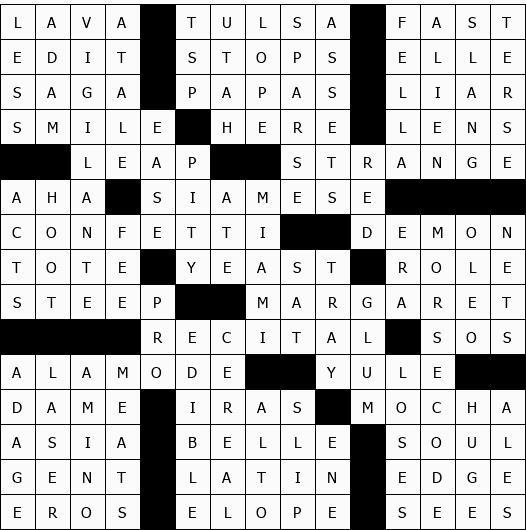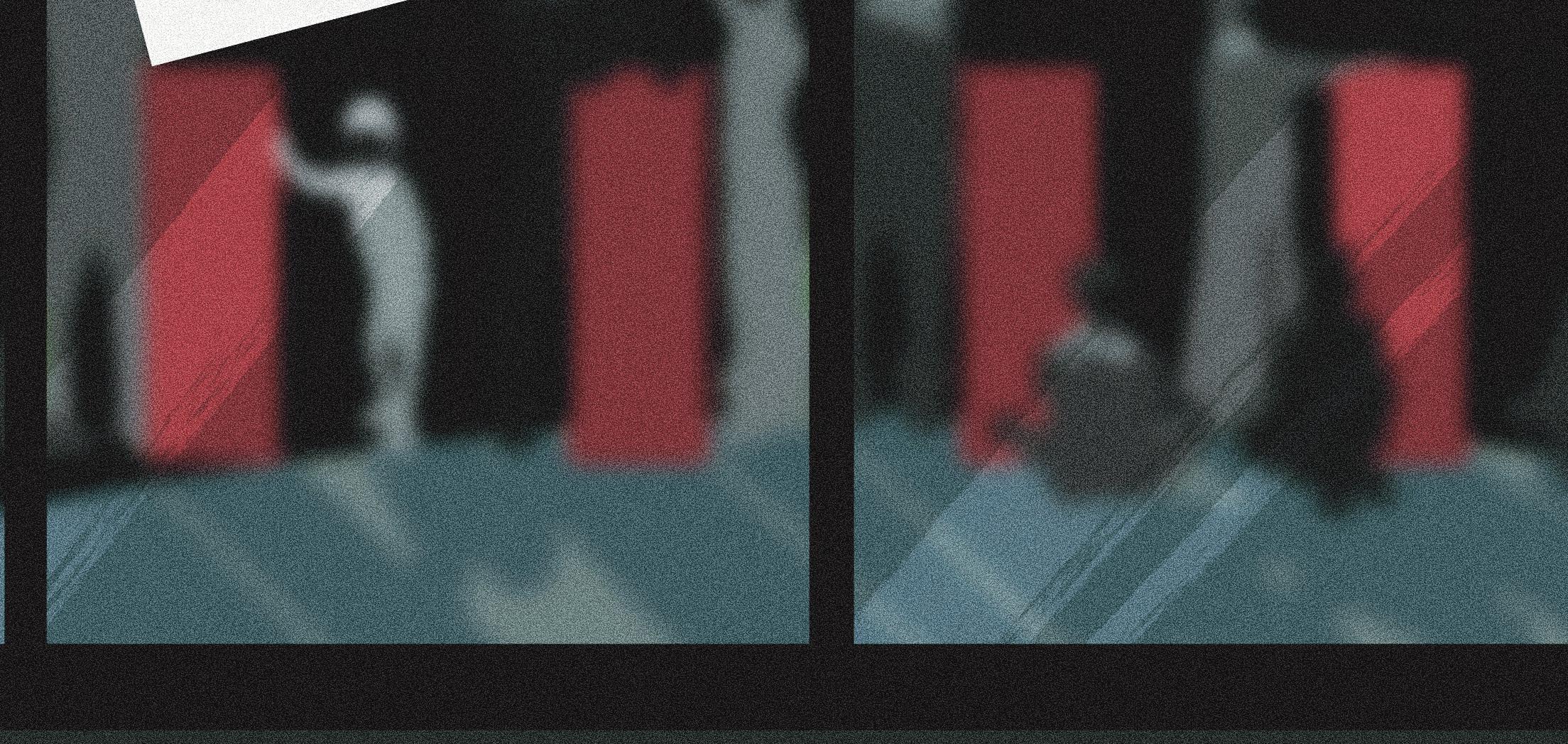













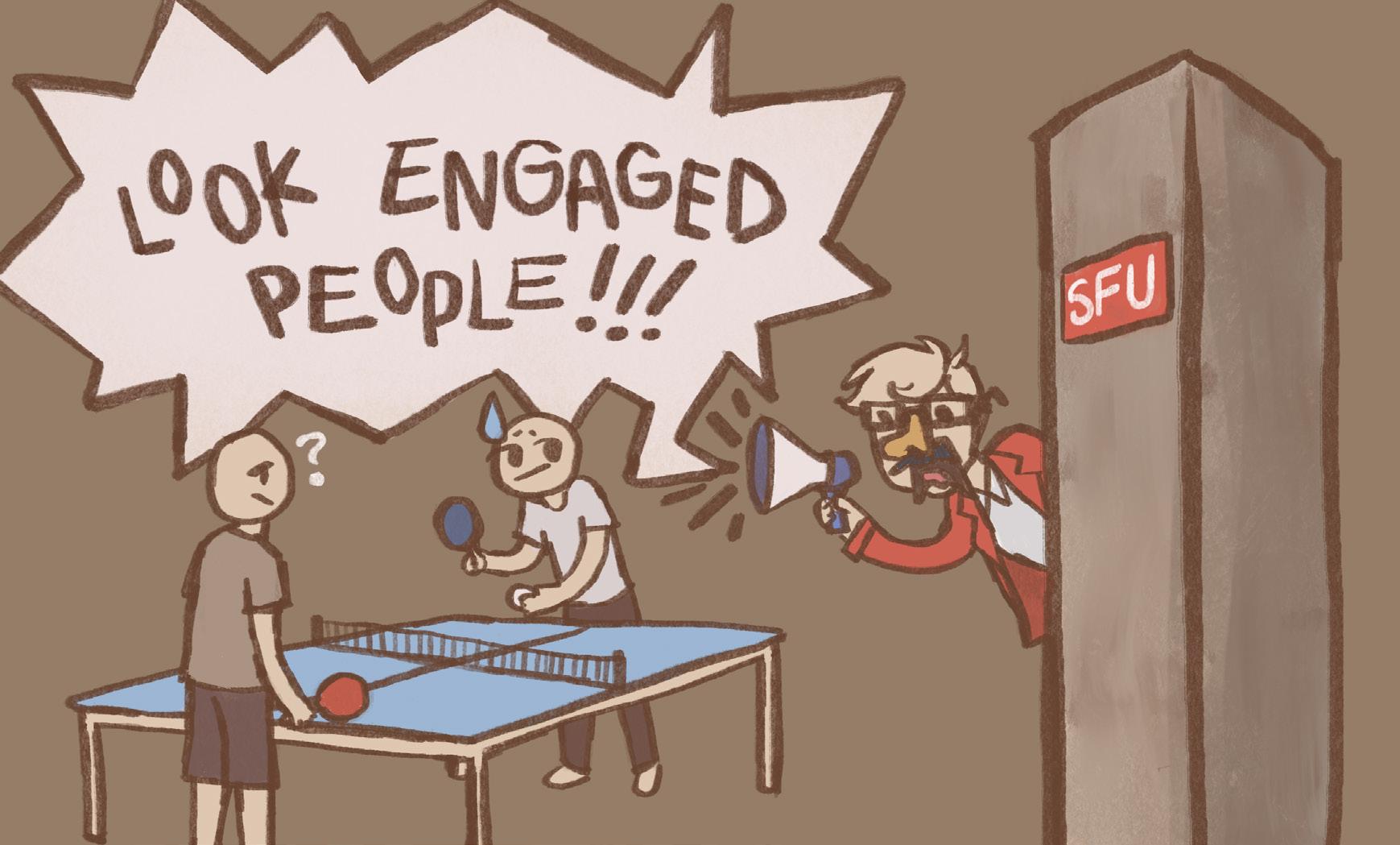
EDITOR-IN-CHIEF
Petra Chase eic@the-peak.ca
COPY EDITOR
Michelle Young copy@the-peak.ca
FACT CHECKER
Karly Burns factchecker@the-peak.ca
NEWS EDITOR Olivia Sherman news@the-peak.ca
NEWS WRITER
Hannah Fraser
OPINIONS EDITOR Olivia Visser opinions@the-peak.ca
FEATURES EDITOR
Daniel Salcedo Rubio features@the-peak.ca
ARTS & CULTURE EDITOR Izzy Cheung arts@the-peak.ca
HUMOUR EDITOR C Icart humour@the-peak.ca
STAFF WRITERS
Hailey Miller, Kaja Antic, and Yasmin Hassan
BUSINESS MANAGER
Yuri Zhou business@the-peak.ca (778) 782-3598
PROMOTIONS MANAGER
Juliana Manalo promotions@the-peak.ca
PRODUCTION & DESIGN EDITOR Abbey Perley production@the-peak.ca
ASSISTANT PRODUCTION EDITORS
Minh Duc Ngo and Josh Ralla
PHOTO EDITOR
Gudrun Wai-Gunnarsson photos@the-peak.ca
WEB MANAGER
Subaig Bindra web@the-peak.ca
MULTIMEDIA EDITOR
Emma Ciprian
ASSISTANT MULTIMEDIA EDITOR
Quinn Masselink
DISTRIBUTION COORDINATORS
Anastasia Shatska and Michelle Leung
BOARD OF DIRECTORS
Emma Jean, Payal Raj, Olivia Visser, and Yuri Zhou
CONTRIBUTORS
Yuki Cai, Cliff Ebora, Victoria Lo, Elyana Moradi, and Angelina Tran
PEAK ASSOCIATES
Aria Amirmoini, Amirul Anirban, Amrit Kamaal, Prerita Garg, Den Kinanti, and Yildiz Subuk
COVER ARTWORK
Aliya Nourlan
STAY CONNECTED
The Peak MBC2900 8888 university Dr. Burnaby, BC V5A 1S6 (778) 782-5110
READ THE PEAK

Find extended and cited articles at the-peak.ca Download digital issues at issuu.com/peaksfu
ABOUT US
The Peak is the official weekly student newspaper of SFU and is published every Monday. We’re funded by a student levy and governed by a Board of Directors. Any SFU student can apply to become a writer or editor.
We reserve the right to edit submissions for length, as well as style, grammar, and legality. We also reserve the right to reprint submissions at any time, both in print and on web. We will not publish content that is sexist, racist, or otherwise prejudiced.
TERRITORIAL ACKNOWLEDGEMENT
We acknowledge that The Peak’s office is located and our paper is produced, distributed, and read on the Unceded Coast Salish Territories of the xwməθkwəy̓əm (Musqueam), səlilwətaɬ (TsleilWaututh), Kwikwitlem (Coquitlam), Kwantlen, Katzie, Semiahmoo, and Skwxwú7mesh (Squamish) Peoples. Unceded means that this land was never surrendered, relinquished, or handed over in any way. We recognize that the unceded land that we occupy includes not only the SFU Burnaby campus, but extends to the land occupied by the Vancouver and Surrey campuses as well.
In Volume 177 Issue 5 of The Peak, “Indie rocks with The Sylvia Platters,” the article “UBC students establish encampment in solidarity with Palestine” was attributed to the wrong author, Yashita Dhillon. This article was written by Yasmin Hassan, Staff Writer. In the article, “A look back at Joy Johson’s first term,” we noted, “On May 19, the SFSS passed a motion in solidarity with Palestinian students, calling to join Boycott, Divestment, and Sanctions campaigns.” This happened in 2021, but a more recent SFSS referendum, the Palestinian Liberation policy, passed on March 26, 2024.
Nurses say real solutions haven’t been provided to solve our public health emergency
HANNAH FRASER · NEWS WRITERContent warning: mentions of death and overdose, colonialism, and intergenerational trauma.
The BC government received approval to recriminalize illicit substance use in public spaces, one and a half years into a decriminalization pilot. Advocates from the Harm Reduction Nurses Association (HRNA) expressed discontent. The HRNA is a Canadian organization working to “advance harm reduction nursing” and “the rights and dignity of people who use drugs.”
In January 2023, Health Canada granted BC a “three-year exemption under the Controlled Drugs and Substances Act to decriminalize people who use drugs.” This meant of-age British Columbians found carrying small amounts of illicit drugs for personal use would no longer be arrested or charged. Instead of confiscating their drugs, they would be directed to health and social support.
Now isn’t the first time the BC government has attempted to reverse this exemption. Less than a year into the exemption, they passed Bill 34, the Restricting Public Consumption of Illegal Substances Act, which would undo this, and allow for confiscation of illegal substances and potential police arrest. At the time, the HRNA filed an injunction, which is a legal challenge, meant to prevent Bill 34 from coming into effect.
The injunction was overturned in early 2024 after the HRNA proved the Act “would cause irreparable harm to people at risk of injury and death from fatal drug poisoning,” winning the case.
The HRNA alleged the Act would subject more people to fatal overdose, create a barrier to healthcare outreach, and “drive racial discrimination, particularly against Indigenous
people.” In 2021, the First Nations Health Authority explained Indigenous people are overly-represented in the toxic overdose crisis due to the intergenerational trauma caused by the residential school system and other discriminatory policies.
We need to move away from criminalizing behaviors that are the direct result of the harms of colonialism.
However, recriminalization has been enacted just a few months later, renewing these concerns. The BC Assembly of First Nations said, “we need to move away from criminalizing behaviors that are the direct result of the harms of colonialism” and “the toxic drug crisis needs to be treated and addressed as a public health issue, not a criminal justice issue.”
“The BC government’s actions today will put people who use drugs and people who rely on public space at further risk of harm and death,” said Corey Ranger of the HRNA in a press release. “By imposing these restrictions on the decriminalization pilot without offering real solutions like expanding overdose prevention services and access to housing, the province has declared some lives unworthy of saving.”
A report from the BC government revealed that 93% of accidental deaths in the province’s houseless population were due to the toxic drug supply in 2021.
Content warning: mentions of genocide and violence.
On May 23, SFU students occupied the downtown campus’ Belzberg Library to demand the university divest from military assets supplied to Israel and call for an immediate ceasefire. A broad coalition of SFU groups organized the protest, which was intended to coincide with SFU’s Board of Governors meeting. A rally was also held outside campus for over four hours, and there was a teach-in about “building community resistance.”
In March, students protested at the Board meeting in-person with the same demands. Since then, the Board has moved their monthly meetings online.
In an open letter to the Board asking for “divestment and accountability from SFU’s administration,” the coalition explained how SFU owns shares in major war contractors Booz Allen Hamilton, BAE Systems, and CAE Inc.
“BAE is the sixth largest war contractor globally, with 97% of its revenue coming from military equipment, Booz Allen Hamilton derives 64% of revenue from war-related products, and CAE is Canada’s fourth largest war contractor,” the letter said. “The weapons and services of these corporations have collectively facilitated the killing, maiming, or displacement of millions of individuals.
“We can see no good reason why SFU would invest in an industry that enables and profits from such destruction, which disproportionately harms the most vulnerable members of our societies,” the coalition continued. There are now over 900 members and organizations from the SFU community who have signed the open letter.
The Peak spoke to Artin Safaei, a political science student who was at the protest. According to Safaei, the coalition anticipated the Board wasn’t planning to discuss divestment, based on the response from the March meeting, so they felt it was necessary to raise the pressure. The protest gathered people from the UBC encampment and SFU’s Faculty for Palestine, “a network of faculty who support the cause of Palestinian liberation.”
“Now that you are not listening to us, we’re going to make you listen. We’re going to force you to listen to us,” Safaei said. “We’re going to take back libraries, we’re going to take back buildings, we’re going to disrupt things, disrupt the normal process of the institution until our demands are met,” he continued.
As students protested inside the library, they watched a live screening of the Board meeting. The Board did not discuss divestment or calling for a ceasefire. Safaei said “they actively ignored” any such discussion as students protested right outside the Board’s meeting room.
In a statement to The Peak, Michael Russell from SFU’s media relations said the university “respects the right to peaceful protest,” including the demonstration at the Belzberg Library.
The student coalition expressed they “refuse to sit quietly by and allow the Board of Governors to violate SFU’s commitments to reconciliation, community engagement, antiracism, and anti-oppression” by investing in genocide.
Safaei expressed universities are supposed to educate future leaders not to repeat histories of genocide and colonialism, so their inaction is “hypocritical and destructive.”
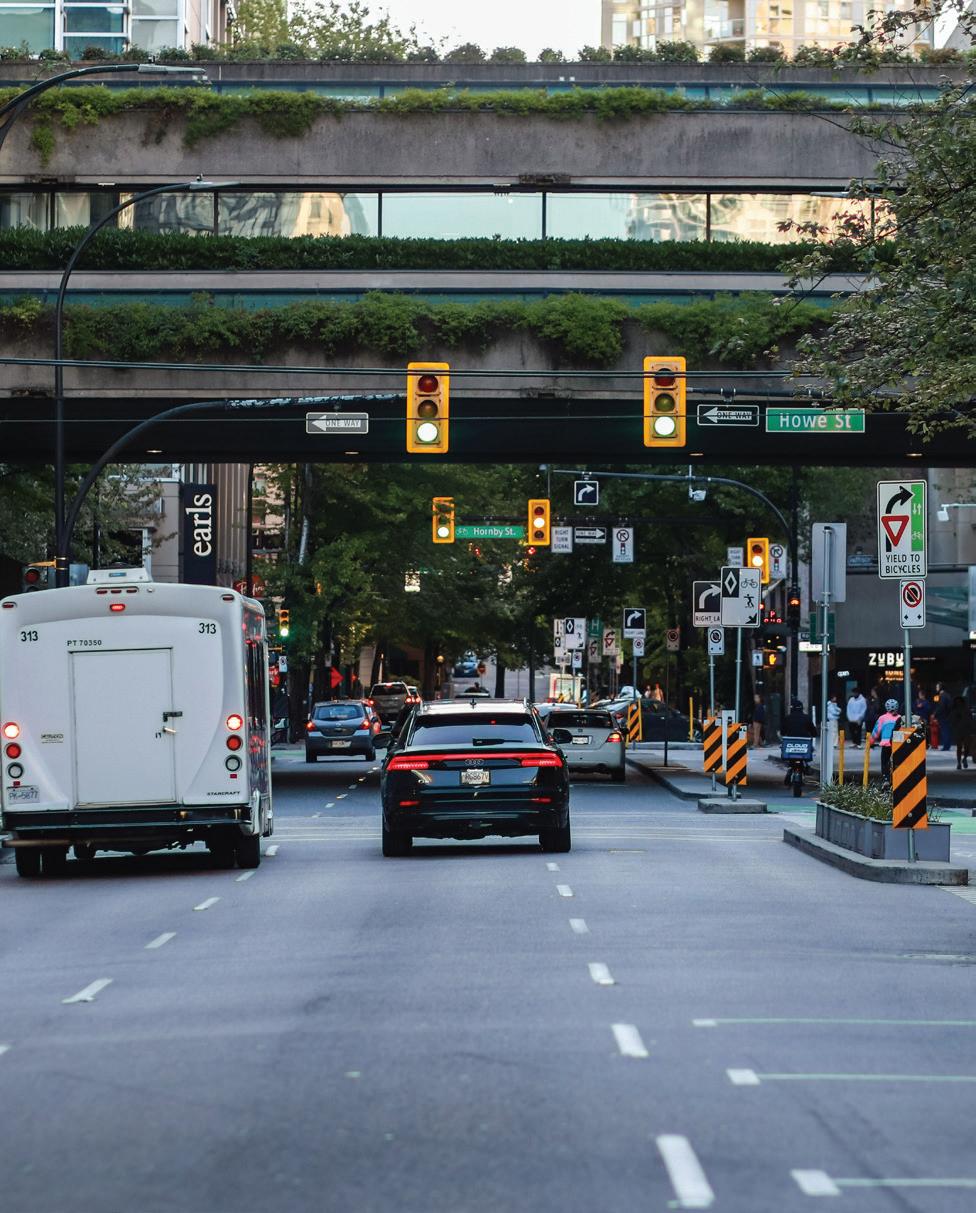
Caitlin Shane of Pivot Legal Society and co-counsel for the HRNA said, “Bill 34 is punitive, political and lacks evidence.” President of the Union of BC Indian Chiefs, Grand Chief Stewart Phillip, said the response to the overdose crisis requires “culturally appropriate treatment and recovery services, housing, and tools to address a range of intersecting trauma that for Indigenous peoples, is very much wrapped up in the destructive impacts of colonialism.”
The HRNA “reached out to the province with an offer to collaborate to address concerns without causing further harm, through a range of legal and policy changes.” They suggested implementing “rapid scaling-up of supervised consumption sites.
“More than a century of prohibition has demonstrated that [police] enforcement has not decreased drug availability or use, is extremely expensive, and is clearly linked to an increased risk of overdose and cycles of homelessness,” said the HRNA.
“When we see public drug use, it is because people do not have housing, services, or safe places to go — and because people want to stay alive, not die alone and out of sight.”

He said that while SFU administration implies they are working towards reconciliation by doing land acknowledgements, their investments “support a settler colonialist state.” He called this a “charade, a façade.”
On May 30, president Joy Johnson released a statement saying SFU and the Board are “looking for ways to make a meaningful difference and seeking information about SFU’s investment practices,” and acknowledged calls for divestment.
Johnson added there will be a review process for SFU’s investments that will include consultation with experts and the community. This is the first time the university has officially responded to the SFU community’s calls for divestment and action since late 2023.
This is an ongoing story that The Peak will continue to cover.
Transformed 911 responsiveness and hospital care for patients as of April 1
HANNAH FRASER · NEWS WRITEROn April 1, 60 rural and remote communities in the Vancouver Coastal and Fraser Health regions are working to improve paramedic staffing models for better 911 responsiveness and consistent out-of-hospital care.
Previously, they worked under the scheduled on-call model, and paramedics carried a pager. They were then required to access the local ambulance station once they received a page. However, many rural communities in the Vancouver Coastal and Fraser Health regions had concerns that this model was not quick enough to respond to 911 calls.
Mayor Andy Morel of the City of Rossland said the city’s year-round active, outdoor community and population of aging residents required ambulance services that could more readily support their health care needs. So, in more muti-generational communities, the scheduled on-call model could not support the city.
Given the new staffing models — 24/7 alpha, mix shift, and kilo shift — many communities now have two to three times more paramedics in ambulance stations than the on-call model did. 24/7 alpha involves full-time paramedics on duty 24 hours a day, while mix shift has eight paramedics that work 16 hours in their stations and hours on-call. Some communities have a mix of kilo/on-call shifts, similar to the scheduled on-call model as a full-time unit chief and staff are entirely on-call.
The Peak corresponded with Bowen Osoko, a spokesperson for BC Emergency Health Services (BCEHS) for more information on the changes.
According to Osoko, recruiting and filling the new emergency and health roles has been ongoing for several months now. While the BCEHS fills these positions, existing paramedic staff
EMPOWERING YOUTH
have been filling in extra positions to compensate for the new roles. Osoko notes the backfill “has been successful to date.
“We’re also working hard to connect with local community members who want to join BCEHS and provide excellent prehospital care to their neighbours and community.”
We’re also working hard to connect with local community members who want to join BCEHS and provide excellent pre-hospital care to their neighbours and community.
BOWEN OSOKO BC HEALTH EMERGENCY SERVICESJason Jackson, Ambulance Paramedics of BC president said, “Patient care is the most important thing to us, and this new approach helps us better recruit and retain paramedics to work in these smaller communities, improve how we respond to 911 calls, and most importantly, help paramedics provide better care to our patients.”
In addition, the BCEHS has brought more Indigenous paramedics onto their team. Indigenous peoples have historically faced injustices in healthcare due to racism, and rural communities away from urban centres make accessing care much harder. Over a third of Indigenous people in BC
Transit advocate and a number of youth speak on the benefits of this resolution
HANNAH FRASER · NEWS WRITER
On May 13, Saanich City Councillors voted to allow free transit for “young people up to, and including, the age of 18.”
The resolution was brought forward by the Union of British Columbia Municipalities (UBCM) to expand the Get On Board program, which already grants children 12 and under free access to all BC Transit and TransLink services.
Council hopes that expanding the program could yield a “wide spectrum of benefits.” These include “financial support for individuals and families, social engagement, accessibility, equity, independence, and environmental benefits.” The Peak corresponded with Dr. Teale Phelps Bondaroff, chair of Saanich’s Active Transportation Advisory Committee, for more information.
“Free transit for young people is an investment in our future,” he said. He added this will aid youth in BC in accessing “education and employment opportunities, social activities, and other essential services.”
“When we make transit free for young people, we empower them to explore, connect, and grow independently, building a sense of confidence and autonomy while fostering a generation of life-long transit riders,” he said. During the councillors’ meeting, ten young people and a Girl Guides unit shared what the program would mean to them as young transit takers.
According to Phelps Bondaroff, one speaker highlighted that more accessible transit would allow for better social connection among youth. Another speaker spoke about how her bus pass allowed her to get to school every day although she lived much further away.
“When you have access to expanded transportation, you have access to so many new educational opportunities that would otherwise be unavailable to you.”
When you have access to expanded transportation, you have access to so many new educational opportunities that would otherwise be unavailable to you.
TEALE PHELPS BONDAROFF
CHAIR OF SAANICH’S TRANSPORTATION ADVISORY COMMITTEE
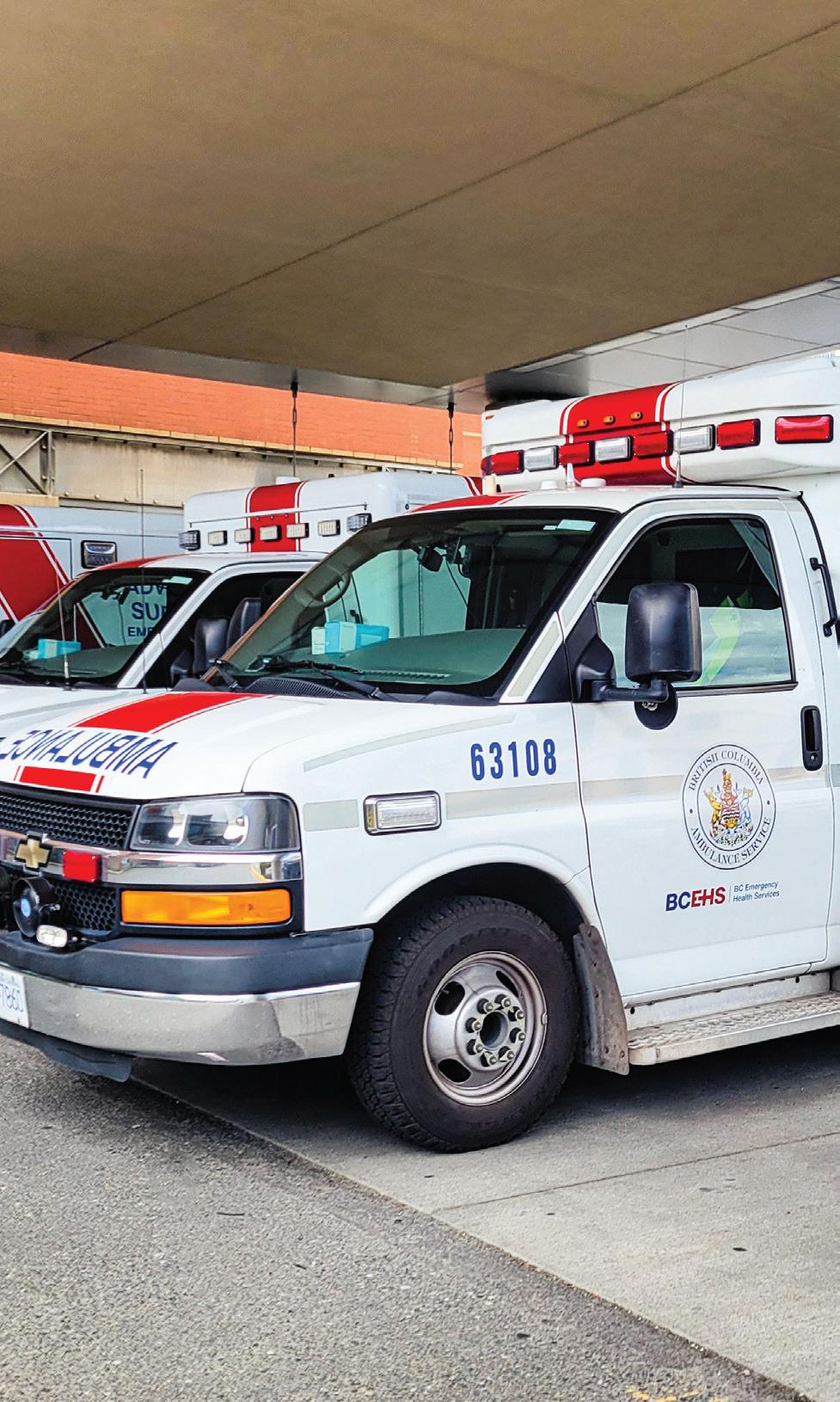
reside in the north of the province. Tania Dick, the Indigenous nursing lead at UBC, noted that she and other nurses are flown into rural communities to provide aid. However, visits often aren’t made for weeks due to barriers with travel. These communities often depend on external resources from the government and organizations for this basic care. “We’re actively working to bring Indigenous people into all levels of our organization,” Osoko said. “Doing so helps build trust, which helps improve patient care across BC.”
The Peak reached out to the First Nations Health Authority and the First Nations Health Council for more information, but did not hear a response by the publication date.
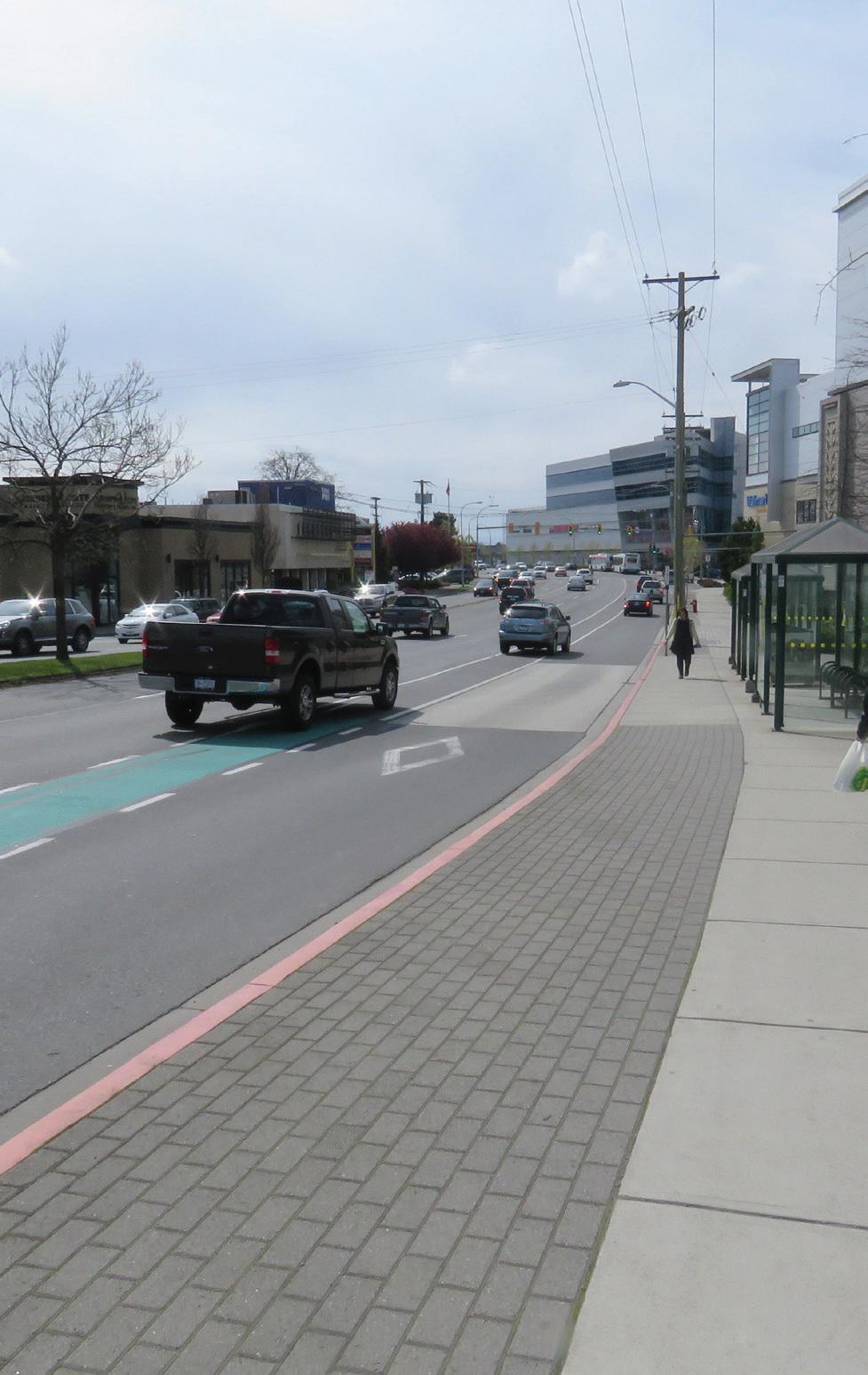
He emphasized that making transit free for more youth would be better than implementing a means tested program, which “determines if a person or household is eligible to receive some sort of benefit or payment.” Studies have also “found many families had unmet needs for services or were not using services available to them” because of other barriers, such as “eligibility and documentation requirements, program structure, availability of translation services, location of services, intake procedures, and length of waiting time to apply for or receive services.”
While the public has other concerns about transit, such as more regular service, Phelps Bondaroff explained that free transit for youth creates “lifelong transit riders” who will “demand improved bus services and also be willing to fund them.”
In addition to UBCM’s resolution to expand transit for youth, another draft resolution to make transit free for seniors over 65 has been created and will be discussed during the June 10 meeting of Saanich Council. Phelps Bondaroff expressed that the benefits of free transit for youth also apply to seniors who could also experience better connectivity in their communities through free transit.

Content warning: mentions of dieting and eating disorders.
If you’ve been active on social media in recent years, you might remember seeing (or even doing) those at-home workouts that got so popular back in 2020. While promoting physical activity isn’t inherently toxic, the methods and attitudes promoted by many fitness influencers can be. Social media can perpetuate diet culture and spread misinformation under the guise of quick fixes. Fitness trends often promote an unhealthy obsession with appearance over genuine health and well-being.
Diet culture refers to ideas that falsely frame food as “good or bad,” and promote thinness as an ideal image of health. One study found that most fitness videos on TikTok are weight-normative, focusing on weight as a major indicator of health. For instance, as appealing as those “abs in 10 days” workouts may seem — they just don’t work. Achieving visible abs depends heavily on genetics and diet, and it’s rarely attainable without unsustainable long-term lifestyle changes. Promises of quick fixes like these will likely worsen your mental health, giving you unrealistic expectations, and lead you to over-exert yourself against professional recommendations.
Chloe Ting’s popular “abs in two weeks” routine also doesn’t bother to explain proper form or the importance of rest days. While the “shred challenge” and FAQ on her website does include rest days and notes there’s no guarantee that everyone can achieve the same results — this information is harder to find, and could have been included in the video itself. The video has a disclaimer in the description about her titles being intended to get clicks, though it’s still misleading as many viewers don’t read descriptions.
You shouldn’t compare yourself to people who make a living off their diet and exercise. Our fitness goals should ultimately come from a place of building strength and feeling good.
“What I eat in a day” videos have also become popular on social media, involving creators sharing their daily eating habits. These videos can provide inspiration and meal ideas. However, they often lack nutritional context and can promote unrealistic or unhealthy eating patterns if not viewed critically. This trend is another example of how social media can perpetuate diet culture, ultimately ruining the enjoyment of food for many people. Popular low-carb or keto diets aren’t
the answer to most health or fitness concerns, and you can’t always tell if influencers are being honest about what they eat or endorse in their videos. While it’s great that people can share their personal experiences with nutrition, these videos rarely consider individual nutritional needs or credible, scientifically-backed information. Other trendy ideas like spot-reduction for fat or extreme monthly fitness challenges are common forms of misinformation. Trends that sound too good to be true often are; they can cause physical harm and disappointment when people don’t achieve the promised results. We should always be critical of the content we consume, but especially in relation to health.
Why should I hate my body if it looks a certain way? People should focus on their functional health, not “washboard abs.” When we prioritize aesthetics and dangerously impractical appearances, it damages our sense of self. These “fitness” trends contribute to body dysmorphia and unhealthy relationships with food and exercise. Activity and nutrition are important, but good things come in moderation. Don’t convince yourself that activities like gentle walking are ineffective. And when it comes to nutrition, focus on balance in your diet, getting all the major food groups, and consuming a variety of vitamins and minerals.
You only have one body — it’s worth being kind to it while you can instead of punishing it with unrealistic expectations. Being thin or muscular doesn’t equate to being healthy. Listening to your body and making gradual, long-term changes rooted in science is a better approach to health and nutrition than conformed routines based on physique. The most important thing is to consult a certified healthcare professional, dietician, or physical trainer if you want to learn what works for you. But don’t forget it’s also about your mindset; having a holistic approach to health that includes mental, emotional, and social well-being will help establish a stable bond between your mind and body. As for social media, learn to control what media you consume — don’t let it consume you!
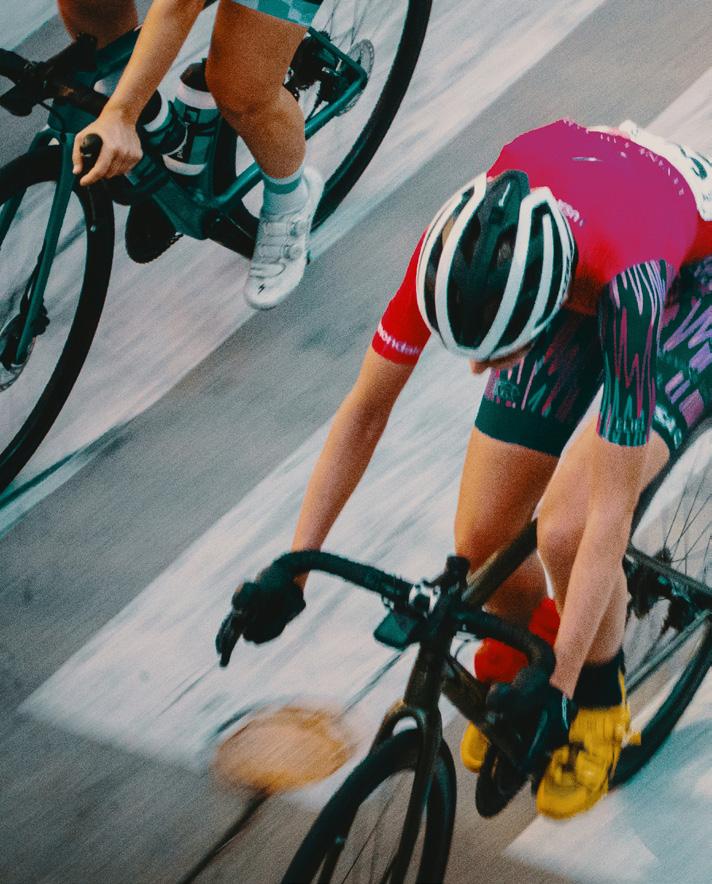
I love my bike, and I love how bikefriendly Vancouver is. From Stanley Park to Spanish Banks, we’ve got the world’s longest uninterrupted waterfront path available to us, with mountain views. I would have no complaints if it weren’t for the fact that CROSSWALKS MEAN NOTHING TO PEOPLE.
I hate to say it, because cyclists already have a bad rep among drivers, but they can be self-righteously impatient. I, too, feel annoyed when people walk in clearly marked bike lanes, but at least I don’t pick and choose which markings I follow! But there’s this phenomenon: bikers don’t stop at crosswalks, even if people are waiting in heavy-traffic areas. There are no cars here! Who do they think the crosswalk on the bike path is for?
To make matters worse, when I actually stop for pedestrians at crosswalks, they don’t go. They just stare at me in disbelief, probably because they’ve literally never had a biker stop for them before. So, there’s now this awkward dance: I’ll motion them to go, they’ll politely refuse and motion me to go as if they’re doing me a favour (I’ve already halted ). Then, after giving them a few seconds to make up their mind, they somehow always decide to actually go as soon as I start. I end up stopping again and they run as if the floor is lava. It didn’t have to be like this!
The worst is when I stop at a crosswalk for folks but no one else does, so I’m just sitting there while bike after bike passes, everyone for themselves. Crosswalks are few and far between, so it’s not even that inconvenient to stop in the pedestrianheavy areas, where they’re designed to get walkers to their designated paths safely — which is great for everyone sharing the path!
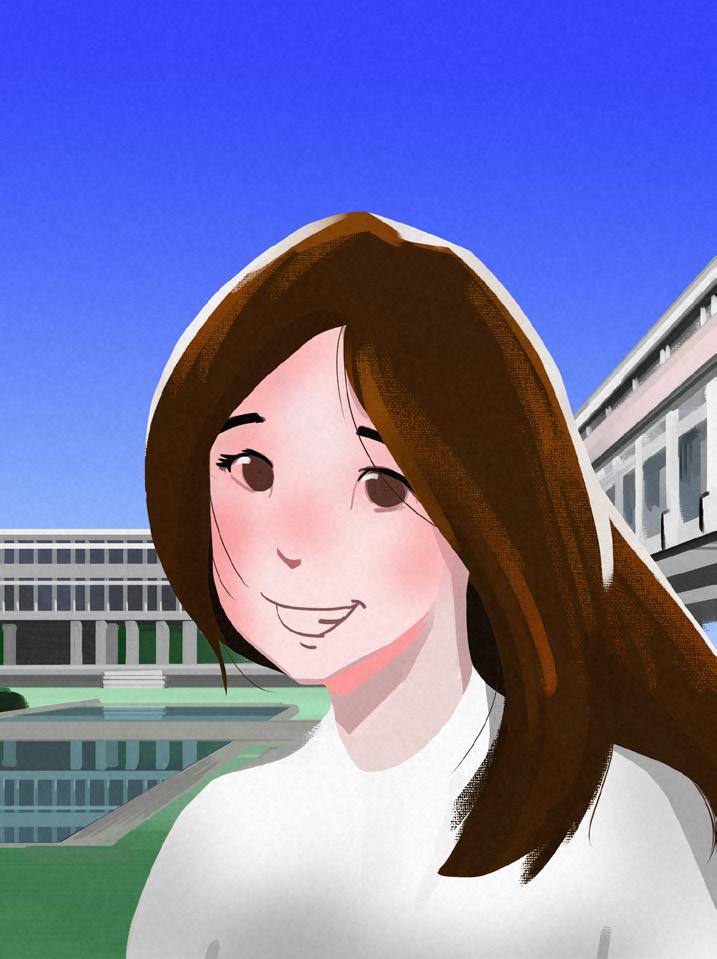
ILLUSTRATION: CLIFF EBORA / THE PEAK
This summer I decided to take courses on the main Burnaby campus for the first time in my SFU career, and so far, I’ve really enjoyed it.
Scaling Burnaby Mountain watching the Burnaby skyline meet the bright blue atmosphere is unmatched. Sometimes you’ll see a deer or even a bear along the winding roads, the animals welcoming you to the natural beauty surrounding the campus.
I know SFU’s brutalist architecture style seems depressing to many, but there’s something about the vines spread across the library’s exterior walls that makes it seem like an inviting grand fortress.
As I watch fellow students and community members walk through the campus on a nice day — enjoying the AQ pond, reading outside, not worried about being judged for their caffeine source of choice — the concrete blocks become bright and beautiful.
It’s also wonderful to not worry about forgetting my jacket, and when I’m done a full day of class, there’s still plenty of sunlight for my travels home. There’s a certain aura of lightness to the semester, even if you’re taking a particularly difficult course.
I understand some have reservations about the summer semester, whether it be to work or get a break from schooling. Still, the energy of the semester can brighten up the grey experiences of the previous months, and I highly recommend at least visiting the campus paths during this season to get a taste of the beauty often clouded during the traditional school year.
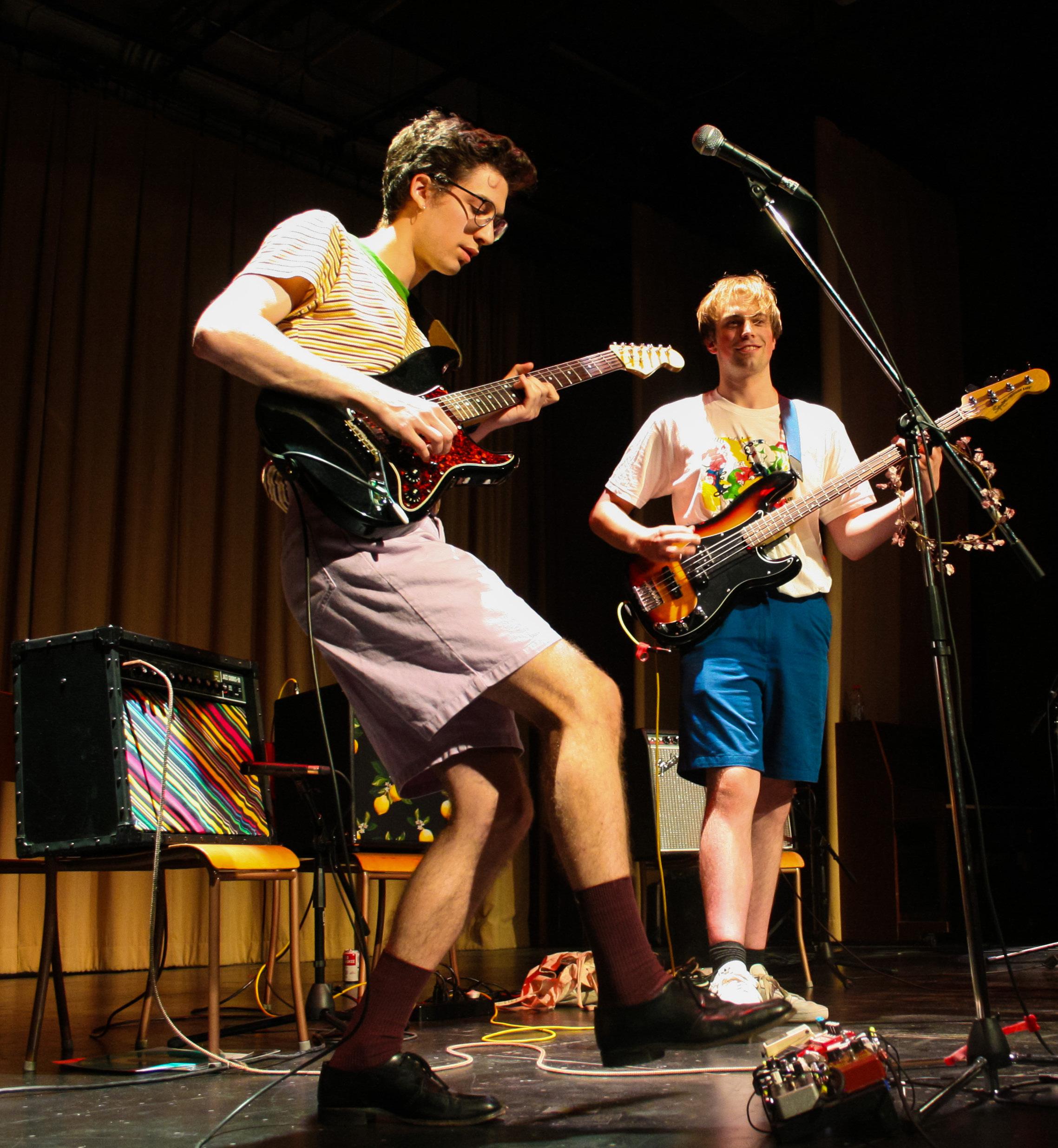
Computer generation was first used in music composition by Alan Turing in 1951. Known for his work with World War II enigma code-breaking machines, Turing once predicted computers would “learn from experience.” His ideas and inventions eventually formed the basis for what we now know as artificial intelligence (AI). In recent years, AI has been creeping into the music and arts scene. This not only degrades creativity in the music industry — it also creates financial barriers for artists.
Many musicians are condemning AI use, and asking fans not to support AI-generated music. This April, more than 200 artists signed a letter against AI in music through the Artist Rights Alliance, including Stevie Wonder, Pearl Jam, Billie Eilish, Arkells, and Norah Jones. The letter states that AI is an “assault on human creativity,” and can “substantially dilute the royalty pools that are paid out to artists.” Although AI-generated music doesn’t get royalties, it still takes opportunities for royalties away from artists who don’t use AI.
Instead of sampling, which means incorporating portions of songs into new tracks — AI can generate “original” sounds using patterns from real songs. However, sampling usually involves consent. AI-generated music is essentially plagiarism of other artists’ sounds and styles. Some have used it to generate fake songs using someone else’s likeness, while others copy musicians’ styles and present them as their own. Despite the number of people condemning AIgenerated music, a few artists — such as Canadian musician Grimes — are embracing it to supposedly support their music-making process. When it comes to music production, some professionals believe AI can be helpful in the sense of streamlining the process of finalizing audio engineering elements in the studio. They also argue AI can help with
promotion and marketing. However, this still hinders originality and makes for an unfair industry.
For new musicians who are trying to make a name for themselves in the industry, AI use gives them less of a chance to stand out and showcase their originality. Since AI can generate compositions faster than humans, it’s difficult for artists to compete and keep up with AI-generated songs. Artists who choose not to use AI during the promotion process are also at a financial disadvantage, as it physically takes longer to promote and market their work.
Although AI-generated music doesn’t get royalties, it still takes opportunities for royalties away from artists who don’t use AI.
AI is already abundant in many technology sectors, but when it comes to art, it’s being taken too far. People create music because of their original ideas, the overall process, and the satisfaction of the final product. AI can’t replace the level of emotion expressed in an artist’s work. If it continues to take over the arts at this alarming rate, it will further degrade originality and put livelihoods at risk. To take a stance against AI, we should support musicians’ original works and boycott AI art in all forms — don’t buy into technological trends that plagiarize genuine creativity.
Content warning: mentions of violence, racism, Islamophobia, and genocide.
Alfonso Cauron’s 2006 film, Children Of Men, tells two thematic stories that overlap throughout its nearly two-hour run time. The first story focuses on the protagonist, Theo (played by Clive Owen) as he aimlessly goes about his days in the year 2027. Residing in London, he ignores the harsh reality the film presents us with: the world is coming to a slow but imminent end as infertility has plagued the planet. No new children have been born for more than 18 years. In the opening scene of the film, many are shown cramped inside a coffee shop watching a news report of the youngest person on the planet passing away. The members of the crowd are struck with horror and dread, but Theo, who appears a few seconds afterwards, brushes past everyone to order his coffee and go about his day.
Theo is sedated. It’s not that Theo doesn’t care about anything, but his faith in humanity has died. He remains complicit in his sedation in order to cope, with no intentions of finding ways to make the world a better place until he is asked to transport a girl across the map for a large sum of money. After an event that presents him with a glimmer of hope, Theo slowly becomes more aware of the inequalities around him.
As the film progresses, Theo’s story overlaps with the xenophobic and dystopian setting. Cauron’s film world is not overtly futuristic, but instead is a bleak rendition of current reality sprinkled with some minor technological innovations. It is not the techno aspect the film decides to focus on, but the extent of xenophobia and disregard for oppressed individuals that the film showcases. While
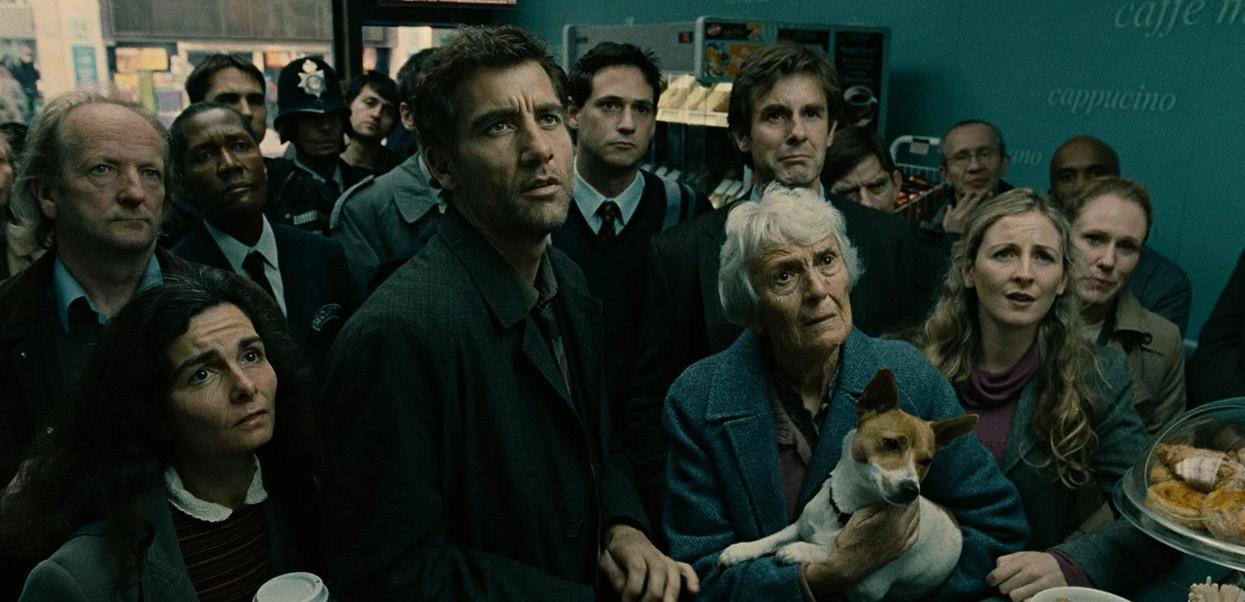
the film’s cinematography is unconventional, it’s a masterful work in storytelling. The shots are a series of long takes — often unbroken sequences that track Theo while also emphasizing the background. It presents the audience with footage of people who are wounded or immigrants detained. The London we see is a façade, trying to pose as one of the only places left that hasn’t fallen into total anarchy and chaos. However, the truth is slowly revealed as immigrants are forced to live in poor conditions. This occurs while privileged individuals live their lives, ignorant to the suffering around them.
Children of Men is not a story about where humanity is headed, but an examination of where we are now. The rise of xenophobic beliefs amidst large-scale crises, as well as ethnic minority groups facing the most brutal violence, are issues that are prevalent in the world today. In China, Uyghur Muslims are systematically placed in camps
and dehumanized for their beliefs and identity. In occupied Palestinian territories, Palestinians are systemically displaced, expelled, and live under apartheid while their suffering is ignored by western powers. While Palestinians are having their history and identity violently erased, the Israeli government tries to present their country as a thriving, idealistic nation. In both these examples, minority groups are facing unfathomable suffering, while many of the country’s privileged population stay sedated to what is going on around them.
It may be easy to get caught up in our own lives and filter out the world around us, but we have a responsibility to act against injustices. Acknowledging and learning about these injustices and their roots can inspire action and advocacy. Instead of trying to prophesize a bleak future, Children of Men confronts us with the present in the form of a dystopian tale.
snəxʷəł: an art exhibit by Mekwalya (Zoe George)
Vancouver Maritime Museum, 1905 Ogden Ave., Vancouver Runs until November 2024
Every day 10:00 a.m.–5:00 p.m.
The title of this exhibit, snəxʷəł, means “canoe” in hənqəminəm (traditional Musqueam language). This exhibit uses photographs, videos, and traditional canoes and paddles to highlight the significance of canoe culture for the səlil wətaʔɬ (Tsleil-Waututh) people. Zoe George, whose Sḵwxwú7mesh (Squamish) ancestral name is Mekwalya, grew up in Squamish and on North Vancouver’s Tsleil-Waututh reserve. “I have been a war canoe paddler my whole life,” she said in her biography, with her typical paddling location being səlilwət (Burrard Inlet). She hopes this exhibit allows all who attend to “understand the importance and presence canoe culture has in First Nations communities across the Lower Mainland.”

GEORGE CLUTESI: hašahʔap / ʔaaphii / ʕacik / haaʔaksuqƛ / ʔiihmisʔap
Bill Reid Gallery of Northwest Coast Art, 639 Hornby St., Vancouver Runs until January 19, 2025 Friday–Wednesday 10:00 a.m.–5:00 p.m.
GEORGE CLUTESI: hašaḥʔap / ʔaaphii / ʕcik / haaʔaksuqƛ / ʔiihmisʔap delves into the legacy of the titular artist, George Clutesi (1905–1988). Put together, the exhibit’s title means “to be protective,” “generous,” “talented,” “strong-willed,” and “treasure.” Clutesi, a Tseshat teacher of song and dance, was a multi-faceted artist who also contributed to the Native Voice, which was the first Indigenous-centred newspaper in Canada. The exhibit, located just a few blocks from SFU’s Harbour Centre, “is an exploration of the life and legacy of Clutesi, whose actions have left an indelible mark on the preservation and celebration of the Nuu-chah-nulth community’s cultural traditions and customs.”
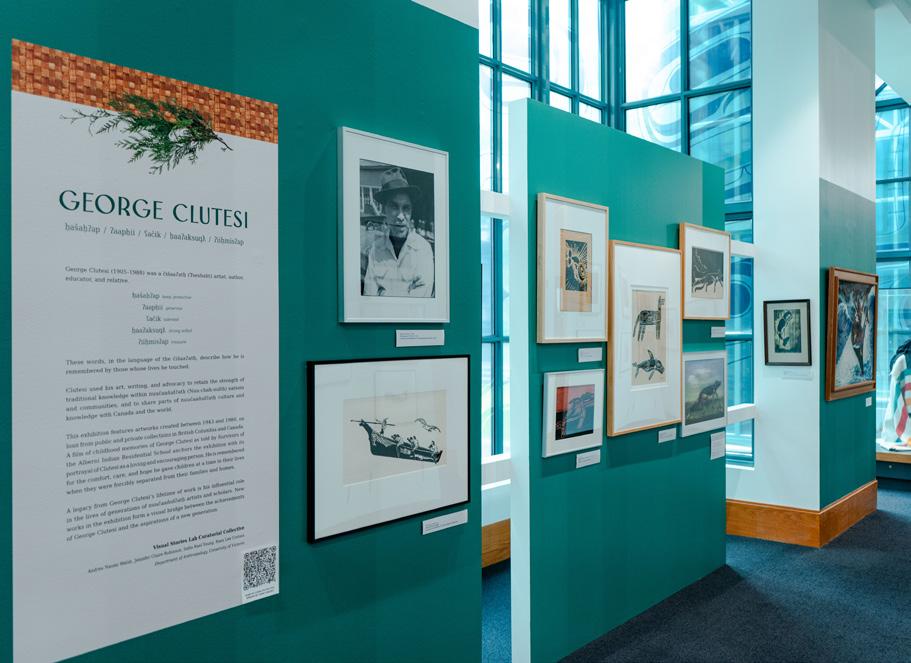
To Be Seen, To Be Heard: First Nations in Public Spaces, 1900–1965
Museum of Anthropology, 6369 NW Marine Dr., Vancouver June 13, 2024–March 30, 2025 Open Monday–Wednesday and Friday–Sunday 10:00 a.m.–5:00 p.m., and Thursdays 10:00 a.m.–9:00 p.m.
After 18 months of renovations, the Museum of Anthropology will be reopening on June 13. To celebrate, they will be featuring To Be Seen, To Be Heard until March 30, 2025.
The multimedia exhibit touches on Indigenous peoples’ representation of themselves in public spaces, like “parades, protests, royal visits, tourist markets, civic jubilees, and intertribal gatherings.” It will consist of archival materials, such as old photographs, and voice-overs from members of various Indigenous communities that will play throughout the display.
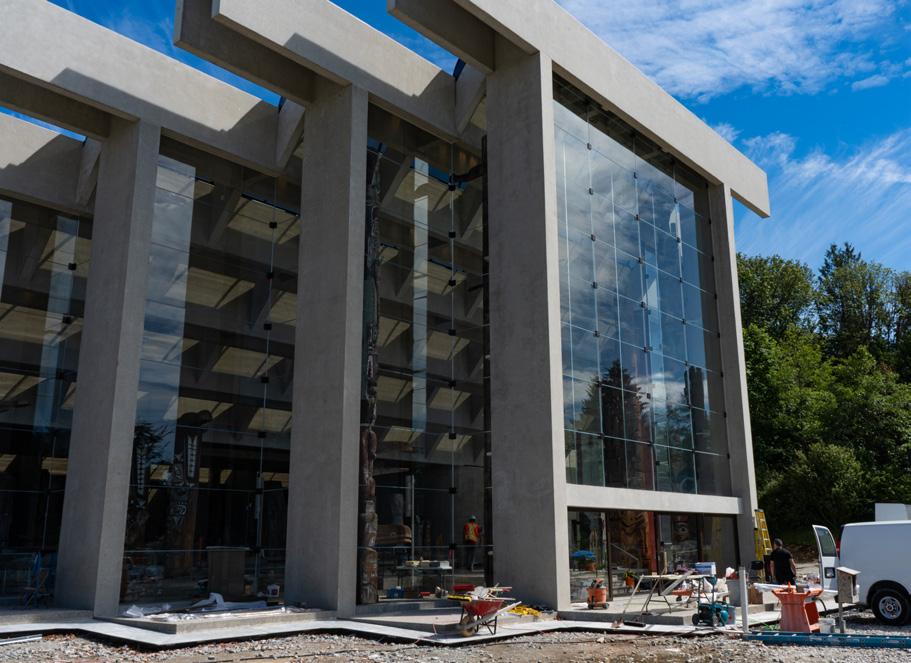
There have been calls worldwide to divest from Israel
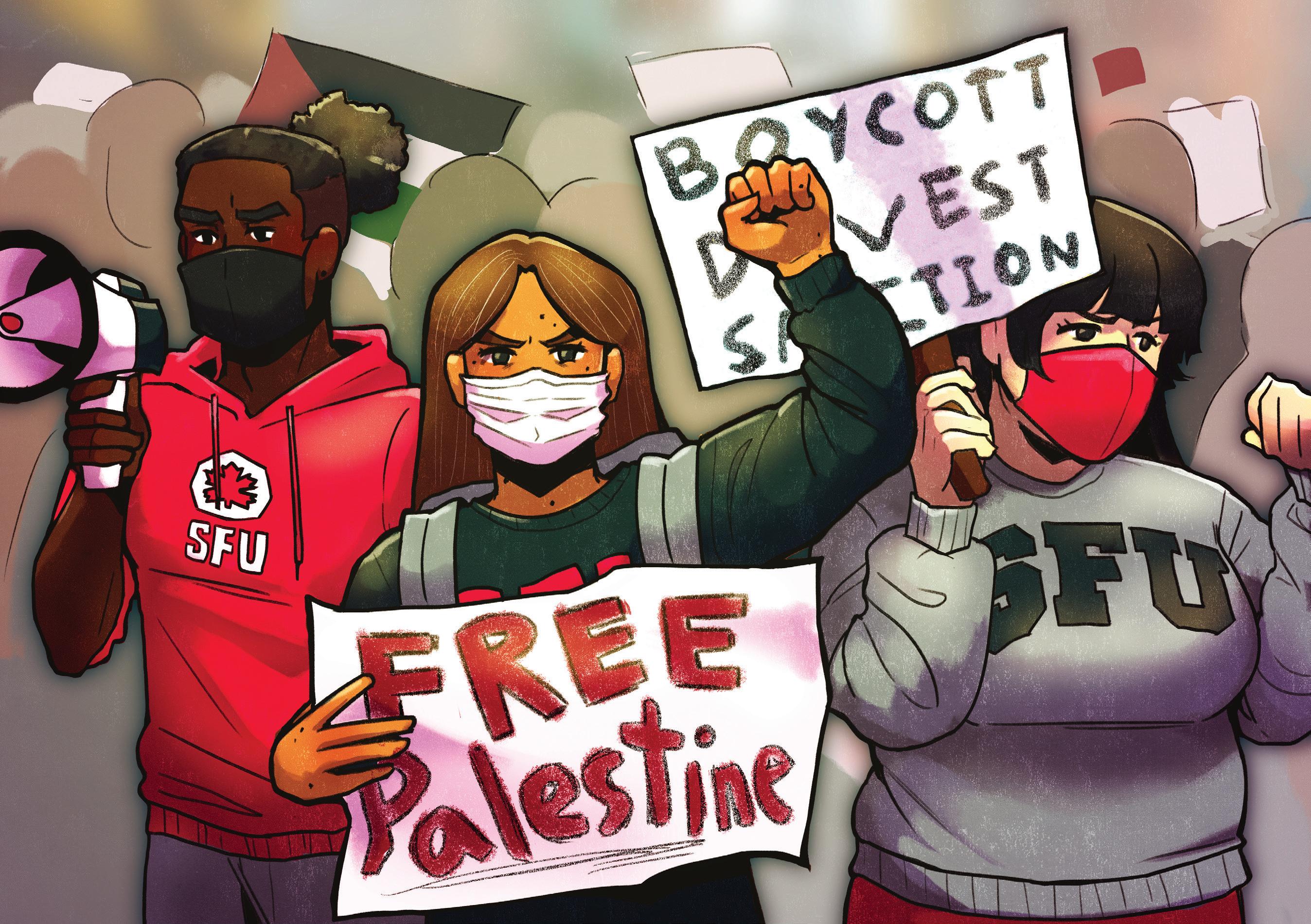


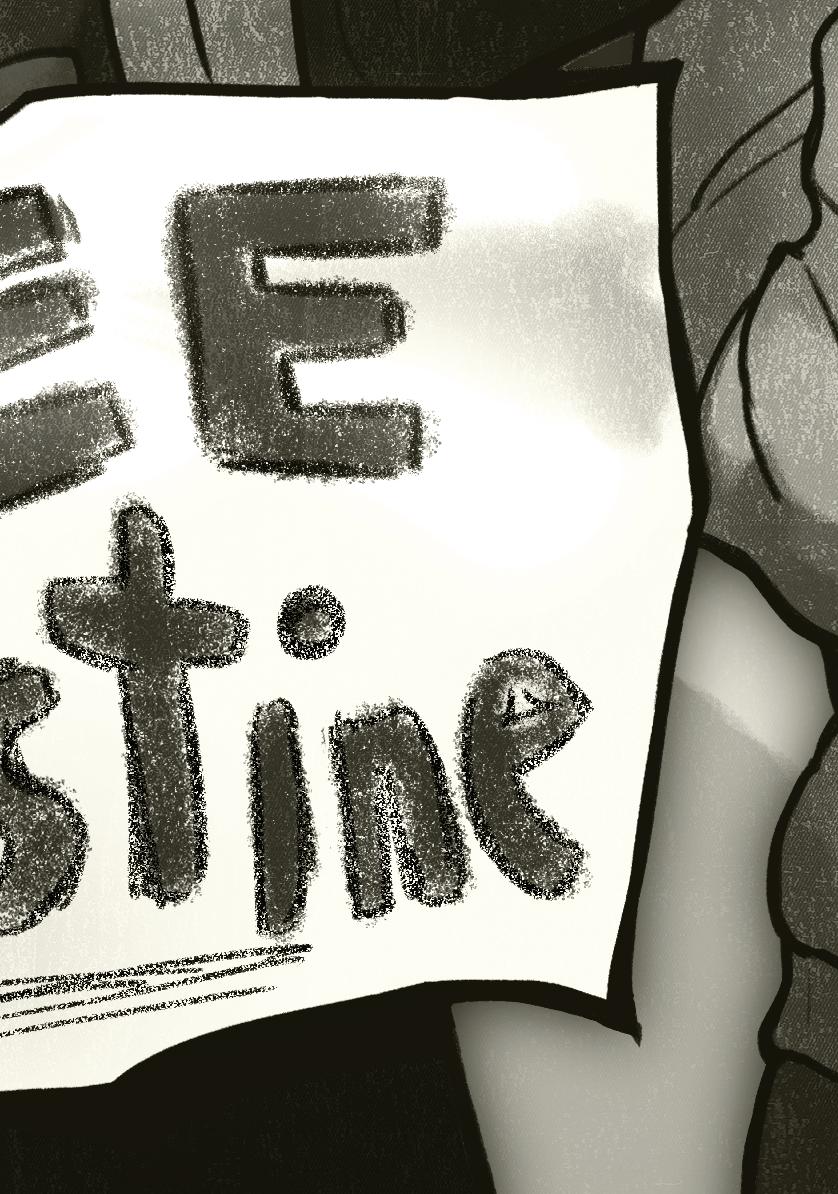
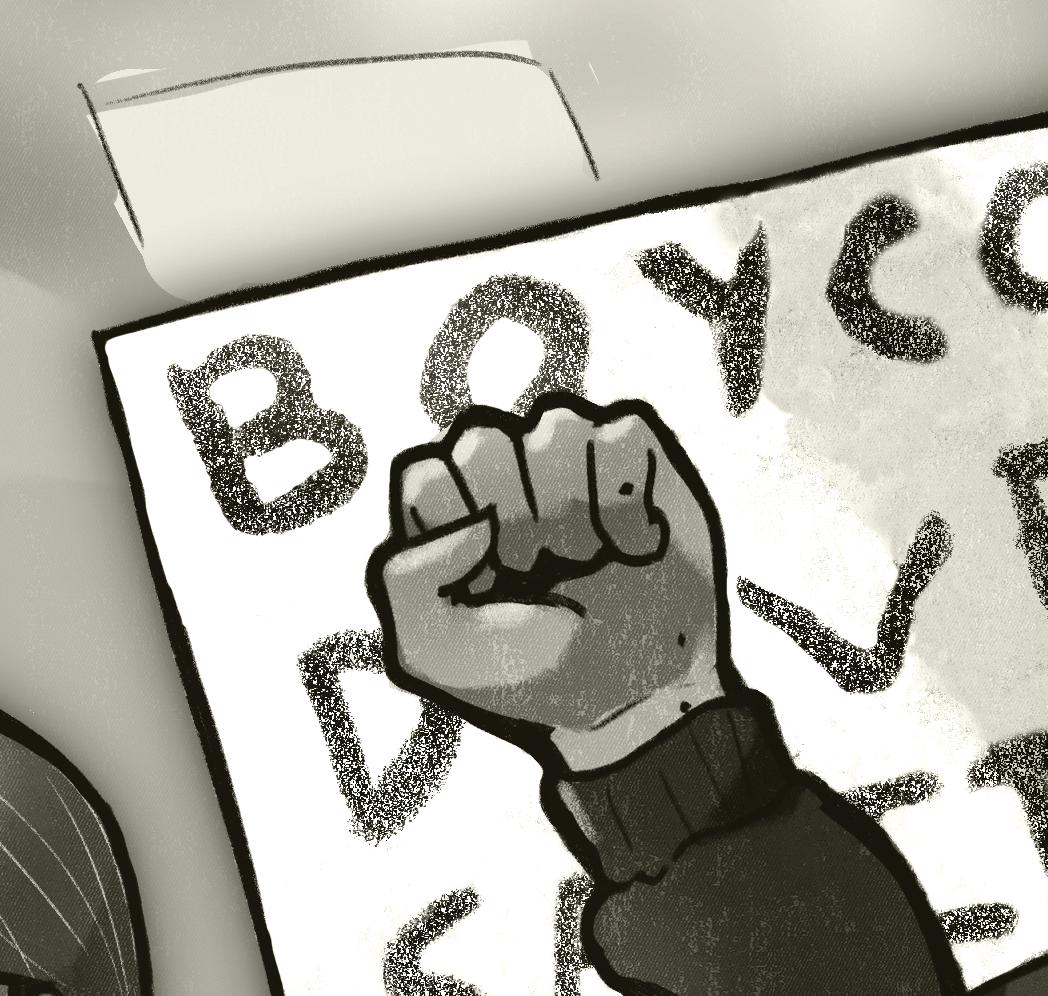

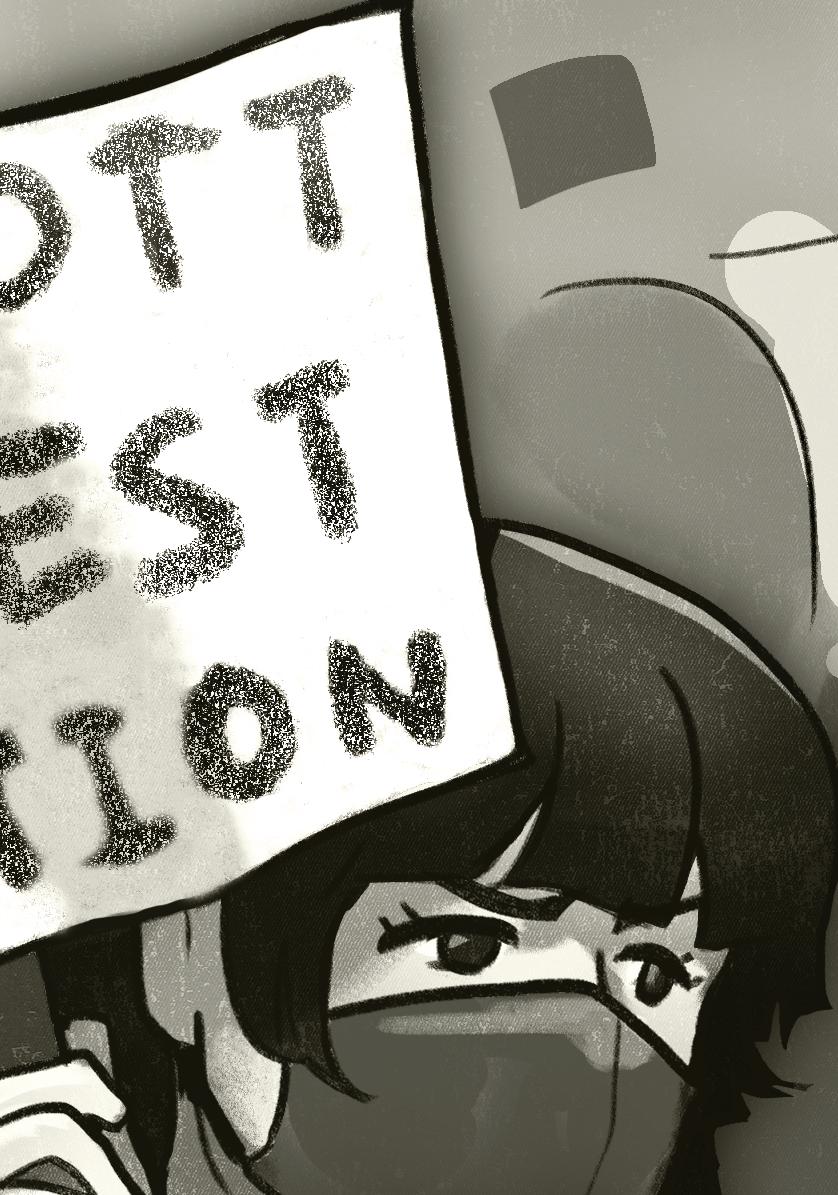
 Anthony Houston SFU Student
Anthony Houston SFU Student
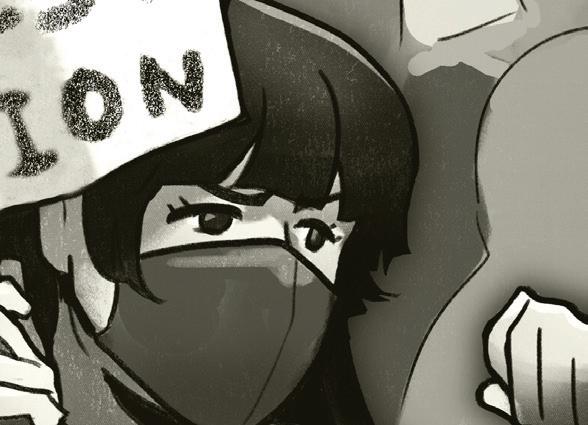
Content warning: mentions of genocide and police violence.
University students across the world have organized encampments in the wake of the ongoing genocide in occupied Palestinian territories. These encampments are pro-Palestinian demonstrations, requesting their respective universities to “divest and sever ties with Israel” and Israeli universities.
Protests started in March in the US, with Columbia University students being some of the first to mobilize and organize an encampment on April 17. By the next day, Columbia president Minouche Shafik authorized the New York Police to enter university grounds and arrest student protestors. However, this did not stop them. Over the next two weeks, students, faculty, and other community members led walkouts and the Columbia College Student Council passed a divestment referendum. This demonstration was replicated throughout the US, with Yale, NYU, and many more ongoing.
These protests also expanded worldwide. France’s Science Po, Ireland’s Trinity College, and Japan’s Tokyo University are only some of the many universities where students have organized Palestinian solidarity encampments — all requesting divestment from Israel, some of which have succeded. Here in so-called Canada, students from the east to the west coast have organized similar protests. From McGill University to UBC, students have echoed the requests of the Boycott, Divestment, Sanctions (BDS) movement and demand their respective universities divest. While SFU campuses haven’t had an encampment, students and faculty have organized other protests and demonstrations. The SFU Faculty for Palestine group has echoed the BDS movement’s demands and on May 23, SFU students took over the Belzberg Library and renamed it to the Khalida Jarrar library, in honor of the imprisoned Palestinian human rights activist.
The common thread among all of these protests lies in the endowments and investments protested universities hold in organizations or corporations that profit and are complicit in the ongoing genocide. UBC’s Endowment Fund has shares in eight companies targeted by the BDS movement, and while the percentage amount of the total endowment is of just 0.28%, monetarily it comes to about $7.8 million — not a negligible amount. Even more, SFU also holds shares of companies directly related with military equipment or war-related products. 6% of SFU’s endowment portfolio (3.9 million US dollars) is invested in BAE systems ($1.99 million), Booz Allen Hamilton ($1.85 million), and CAE Inc. ($0.084 million). Don’t dismiss the impact small percentages have, especially when these investments shouldn’t have happened in the first place.
I personally don’t think students should have control over the financial decisions of a university. After all, why would I, a financial illiterate, be given the power to choose what investments will benefit the university the most? However, organized calls to divest from companies such as Lockheed Martin — the world’s largest arms-manufacturing and military services provider — must be heard. SFU and UBC have both invested in Lockheed Martin, but universities are learning institutions. Albeit externally, the decision to invest in companies directly related with weaponry manufacture is a perplexing one. How can universities continue to promote themselves as institutions dedicated to social justice, human rights, and ethical integrity while profiting from companies enacting the exact opposite of those values? Divesting not only serves as a form of economic pressure, but can also influence other universities and organizations to follow suit. This can snowball into tractable social and political change, just as it did with the South African apartheid divestment and abolition.
In a message to the UBC community, president Benoit-Antoine Bacon mentioned the university “does not directly own any stocks in the companies identified by the [BDS] movement.” In that same message Bacon acknowledged that the funds are “managed by external

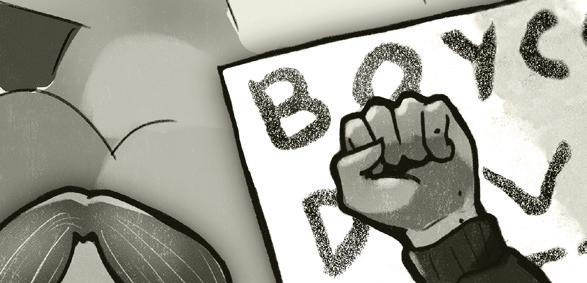

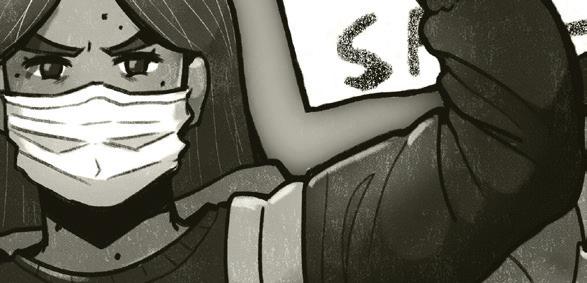
managers,” with about 0.28% of the fund invested in the companies identified by the movement. Where is the due diligence that ensures the university’s investments align with the vision, purpose, and values the university so proudly showcases on its website? What’s the integrity value in holding investments in Lockheed Martin? Does investing in arms and military services align with their purpose of advancing a just society across the world? When our universities profit from these companies, they are complicit in the atrocities their products and services facilitate, and by proxi, we become complicit as well.
Where is the due diligence that ensures the university’s investments align with the vision, purpose, and values the university so proudly showcases on its website?
In the same message, Bacon reiterated the university’s commitment to the community safety. Yet, on June 1, the RCMP were called into campus and arrested a protestor, and, according to People’s University UBC, the week before “multiple local pro-Palestinian demonstrators were brutalized and arrested.” Similarly, SFU has surveilled and limited student-led pro-Palestinian demonstrations. Why is it that so many university administrations have responded to the pro-Palestinian protests by authorizing police access to their campus and surveilling their students? Universities have an obligation to the safety and security of their students. Not to state the obvious, but this includes Palestinian and minority group students. To ignore the historical and present abuse police bodies all around the world have enacted in marginalized and minority groups is beyond a problematic decision, is an authoritarian measure to maintain the status quo.
What can be said of the convocation speeches of so many university presidents — asking students to enact change, to be the leaders of tomorrow’s society, and to build a better future — when they are the first ones to limit change and hold tight to a past that ensures only their own future? Hypocrisy, that’s what it’s called. Students can and will continue to be the engine for change and justice in the world.
We aren’t an essential part of a university, we are the university, and as such our voices and demands should not fall in the willfully unresponsive ears of the administration. If students are organizing with well-crafted demands, projects, and ideas for improvement, there should be pathways that allow the possibility of change. This, however, is not a failure of the student body, but of the administrations that continue to ignore the voice of their university.
University administrations must listen to the voices of their community and provide concrete avenues for student and communityled protests and demands to actually be heard, discussed, and enacted. Concrete processes for petitions to be formalized should be created in tandem with designated “rapid response” teams and transparent discussion and decision-making channels with student and community representation and involvement. Thoughtless and empty worded statements contradict the values and commitments so many universities make for their students.

Sink your teeth into Danny Ramadan’s new memoir
The Wickaninnish Gallery is a premier destination for buying Indigenous artwork and is located in the heart of Granville Island. Featured artist Mike Matilpi is of Kwakwaka’wakw
descent and has been carving ornate jewellery since 1993. Wickaninnish Gallery offers fleece blankets and handmade ceramic pots, as well as kitchen supplies such as coasters featuring depictions of animals in formline design (the unifying black band prevalent in Haida art).
Their enchanting dream catchers are made from stones and feathers. Dream catchers were first created by Ojibwe peoples as a means of protecting each other from bad dreams. With a rich 37-year legacy, this gallery is an essential stop for those seeking cultural immersion and timeless craftsmanship.
Spirit Gallery is home to a multitude of charming gifts. Take a look at their intricately designed hand carvings of ravens or bears on colourful masks and paddles, silver sun earrings or gold hummingbird bracelets, and prints featuring clever formline design like an Angry Raven. You can also buy plushies, playing cards, and board games. Their puzzles are priced between $12–$22, making them a great gifting choice. The gallery features the exceptional work of Klatle-Bhi, who is known for his masks, totem poles, and other sculptures.
Tradish’s The Ancestor Café is the ideal spot for those looking to try out some delicious delicacies from Indigenous cultures. Their plant medicine jams, such as their smoky juniper cherry and chamomile pear, are crafted to help treat ailments like chest congestion and high blood pressure. This café also offers blueberry lavender baked bannocks, the three sisters bannock tacos, raspberry dandelion tea, Spirit Bear coffee, and more. These delectable goodies are crafted by Chef Sarah Meconse Mierau, whose goal is to “nurture a deeper appreciation for Indigenous culture through culinary experiences.” Explore their online ordering option to ship these culinary delights to your home.
YASMIN HASSAN · STAFF WRITER
Crooked teeth is the young boy who swears he likes women. Crooked teeth are in the mouth of an officer staring back at you coldly. Crooked teeth is being the only racialized panelist discussing refugees. Crooked teeth is the wet sand on English Bay after a painful breakup. In Syrian Canadian Danny Ramadan’s newest work, Crooked Teeth: A Queer Syrian Refugee Memoir , incisors and molars take on a whole new meaning.
Right off the bat, I knew this was written brilliantly. Ramadan’s track record with his award-winning works, The Clothesline Swing and The Foghorn Echoes , confirms his literary genius.
The first chapter of this new memoir, “Truth,” explores the shift from writer to reader, culminating in an agreement between two people to bare each other’s scars. Expertly, he weaves the motifs of “crooked teeth, shy smiles, playful bites” into his writing as stand-ins for the deeper conversations of racial injustice.
“I’m telling you these stories as I would tell them to a friend,” Ramadan says in the memoir.
Crooked Teeth retells his childhood growing up in Damascus, Syria. Slowly but surely, he realizes and comes to terms with his sexuality, despite his family, society, and government casting out any idea of queerness. Ramadan makes a point, however, that too often people in the west fail to realize that his home wasn’t always war and catastrophe, but that it was home first and foremost.
“This is my treasure trove of all of the images from my childhood that I will never have access to ever again,”

He talks about his personal life amidst the backdrop of a degrading economy and the seedlings of revolutionary outburst in the 2000s. His journey takes him to underground networks of queer-safe homes, Arab Spring uprisings, imprisonment, becoming a refugee, and then rigidly settling in Vancouver.
This is my treasure trove of all of the images from my childhood that I will never have access to ever again. It feels like, in a way, those images are not just me trying to tell you about those places, but also me trying to protect them, to keep them for myself.
Ramadan doesn’t skimp out on the finer things in his life. He celebrates the joys, finding his chosen family, and creating a meaningful career. He wanted to include these snapshots of his life in Canada because his story didn’t stop when he arrived here.
“Arriving in Canada is a beautiful milestone. But it’s the beginning of a new life,” he told CBC . “I think the balance between what your life was before arriving and what's life after arriving is what is important.”
This memoir is beautifully written, with intense descriptions and comedic quips. It truly feels like a conversation between two friends. If you have the chance, pick up this book and give it a read. Find out the meaning behind those crooked teeth!
Purchase Crooked Teeth at storestock.massybooks.com

SFU students have been observing a strange phenomenon across campuses — more and more common areas filled with students just hanging out
At first, The Peak assumed it was some conspiracy. But the tips have been impossible to ignore — eyewitness accounts swearing SFU hires background actors on campus have been flooding our inboxes.
“I walked by a student tour one day, as the guide was giving them this speech about how student life here is unmatched,” one anonymous student wrote. “All those fresh faces with dreams and preconceived notions of university based on what they see in movies, like Monsters University
“Then I got to Convocation Mall, and it was packed with students enjoying themselves and socializing. People were lining up to play corn hole. Table tennis balls were bouncing between laughing faces. I’d never seen anything like it.
“All of a sudden, I heard a voice from behind a pillar saying, ‘Get back to your places!’ and everyone froze in strange positions. One group huddled together looking at an upside down textbook. When the student tour approached, the voice yelled, ‘ACTION!’ and everyone was in motion. People were giving each other noogies as they roasted marshmallows and mouthed words to each other.”
Another student wrote to The Peak about what they saw when they stumbled into a tent in the Blusson parking lot. “Racks with nothing but SFU hoodies, backpacks full of stuffing paper, and a line of people who looked like regular students sitting to get their hair and makeup done. Someone with short blonde hair and a bushy mustache was saying, ‘Give them dark circles but not too dark — we want to be realistic, but still make them look engaged.’”
The Peak was also approached by Cornelius Cucumber (this is a name we have created to shield them from retribution). Cucumber claims to be a professional background actor hired by SFU in 2022 after he did background work on Nickelback’s “San Quentin” music video, famously shot at Convocation Mall.
Petra Chase • Editor-in-Chief“President Joy Johnson was scouting for actors that day, wearing her usual disguise (Fuzzy Puzz Mustache Glasses from Party City). She approached me after filming and complimented my ability to look engaged with such young people hipster music,” Cucumber said. “Her words.”
Johnson told Cucumber they were looking to hire full-time extras to look like “regular university students who love SFU.” He signed a contract for full-time work, which stated he could not disclose that SFU was hiring background actors.
Cucumber’s role since then has been as a whistleblower in the AQ — blowing his whistle when the foosball ball goes out of bounds. “It’s been quite repetitive, and after two years, I don’t feel like I’m learning much that will help advance my career, and there aren’t many foosball referee roles out there.”
Cucumber says you might recognize him for his roles in such films as Oompa Loompa #48 in Charlie and the Chocolate Factory (1971) — a role he got to reprise in Glasgow earlier this year — and Chipmunks Fan #2 in Alvin and the Chipmunks: The Road Chip (2015).
When The Peak asked Cucumber if SFU’s recent budget cuts and layoffs have impacted the background extras, he said there have been zero layoffs among the extra crew. They’ve actually been working more hours and given more dialogue, such as, “We sure do pay a fair tuition here at SFU, no cap!” and, “This is certainly an institution that puts people above profits, dawg!”
“SFU cut their football program, but hired more ‘football jock’ roles,” Cucumber explained. More recently, SFU shut down its Woodward’s Cultural Programming, but the SFU extra casting director has allegedly been told to represent more arts and theatre students to make SFU appear like it “cares about the arts.”
“They want me to be a whistleblower — I’ll show them whistleblower!” Cucumber attempted an evil villain laugh as he walked away, and we never saw him again.
Here they are bragging about it!
Cynthia Piña Peak AssociateContent warning: mention of blood, graphic description of laproscopic surgery.
Hi!!! I’m endometriosis, and I’m not going to leave you alone :) My life’s work is growing excess tissue and nothing will stop me — not your silly little birth control pills, multiple brands of heat pads, or whatever natural remedies you are trying to give me. Peppermint tea? I don’t care. Exercising and stretching? Any movement just pisses me off. Turmeric? OK, maybe I will calm down for a few hours, but I will act up again tomorrow.
I know you wanted to go to the grocery store today, but I don’t feel like it. We are not going and I will make sure of that. You should run any plans by me first, and even if I say yes, I’ll probably make you cancel at the last minute anyways. You have bloating in your abdomen? Well, my side job is spawning endometriomas everywhere, and I love them so much! They are my babies! They are filled with blood, unlike other cysts, which I think is really unique and cute :) Wait, is that a scalpel? What are you doing?!?! WHY ARE YOU SURGICALLY REMOVING MY BABIES? I do not think so. I will make more!!!!! You can’t remove all of them!!!!!
Why am I like this, you ask? I don’t know, I would say ask the scientists, but honestly, they haven’t studied me at all. I don’t think they know either. Apparently, one of the only ways to get rid of me is to cut you open and scrape me out, but we aren’t doing that now, are we? We are going to be together forever <3 Even if you decided it was worth going through all the trouble of another surgery, I can just grow back! So, you will see more of me eventually anyways!
Xoxo,
Go piss girl (it might hurt, though)
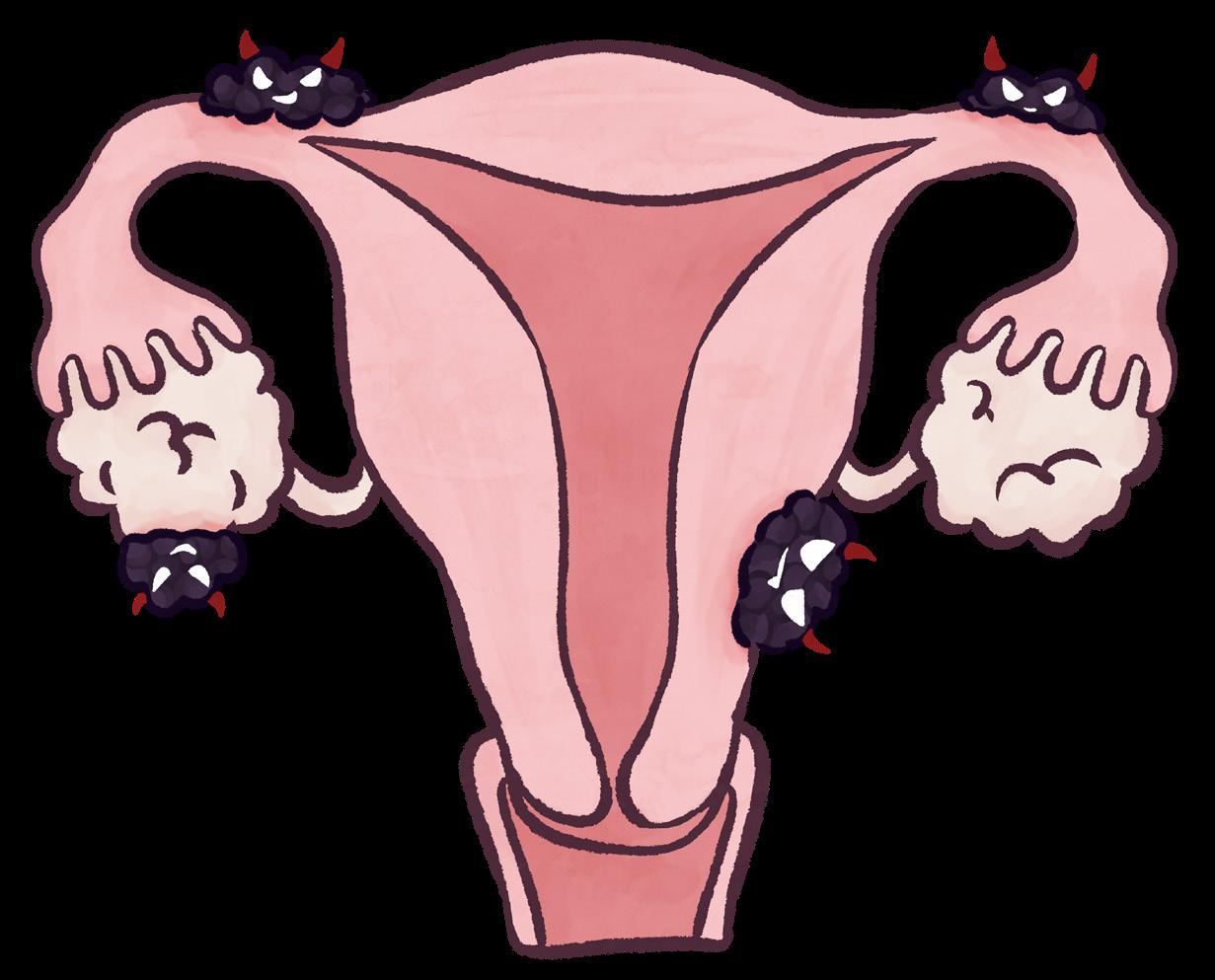
To the fans in Vancouver,
We are deeply sorry for the hurt feelings and wallets of all the fans who anxiously awaited the arrival of the world’s best footballer, just to be met with disappointment. We have heard fans north of the border speak of some Canadian player who is truly the GOAT, but we have been unable to find Christian Sink Lair in our records.
Let’s be serious here. Did you really think a World Cup Champion would willingly play on turf? After taking such a long six-hour flight? No way! Sorry, not sorry, to all the kids wanting to see their “hero.” We hope the 50% off food helped dry your tears. Your parents spent $1,000 on Whitecaps tickets instead of our youth tournament entry fee, where Messi, Suarez, and Busquets actually were? Skill issue.
You moose-riding, maple-syrup-drinking, snow-dwelling Canadians have no idea what proper football is. All you know is that ice sport “hockey” — which is much less beautiful than football.
Edited: Our public relations team has since informed us that there is a hockey team near Miami. And, fun fact, they got further in the playoffs than Vancouver’s team! Who knew? Go Panthers, I guess.
You aren’t aware of our customs — how dare you ridicule our tradition of coming out late to start the second half. We need extra time to strategize how to get as many yellow cards as possible. And how dare you fans call our team disrespectful for stepping on your plain white jersey. It’s your own club’s fault for having a kit that doesn’t stand out! Add some pink!
The match officials may not have been in our favour — they even gave our coaching staff a red card — but at least it wasn’t a six-game suspension like your coach received last year. Yet another thing Miami does better than you.
Vancouver, you can point fingers, but don’t point them our way! The league’s rigid schedule left us no choice but to earn more money at our home stadium rather than send our superstar to make a single appearance across the continent. It’s for the betterment of football as a whole — not that you Canadians would care about that. Can you even play football in all that snow?
Edit again: We have since seen the video of Canadian international and Vancouver Whitecap Sam Adekugbe using the snow in a goal celebration. Maybe some snow here would’ve helped your team in this result!
We in Miami can’t risk the investment we’ve made in the aging Argentinian superstar. It’s better for everyone in the league if he stays uninjured — and is totally not related to the cut he receives from the MLS’ lucrative AppleTV+ deal.
Also, why aren’t Whitecaps fans thanking us for keeping Suarez back in Florida? It saves your “star” players from being bitten by Messi’s right hand man. Your club may have stated that you “have no control over who plays for our opponent,” and honestly, you Canucks lucked out in this one.
While this missed match may leave a bad taste in the mouth for some — assuming you were taking advantage of the aforementioned discounted stadium food — it was all for the betterment of the sport. Go complain to the league for better scheduling. They’ll be so distracted counting their Messi bonuses they might make us play a second-ever match against each other.
Hope your next 50 years are as unremarkable as your first 50. We wish you the best from our perch at the top of the standings.
Sincerely “sorry,”
Inter Miami <3
June 10–16
The stars know how you contribute to the candy salad party

Aries March 21–April 19
You’re built completely different. Look at you getting last-minute candy in the Burnaby campus vending machine room, which is a real room solely dedicated to vending machines. You also made sure to hit up those random gumball and hard fruit candy dispensers at the laundromat that are like $0.25 (the low price is to account for the fact that they’re not sure when the last restock was). Your best score was from sweet-talking the tables at club day. #NoShameInYourGame

Cancer June 21–July 22
Honestly, HiChews and Starburst are an automatic win in my book. Those candies and I are like this . But please, for the love of god, unwrap before we hit record, honey! The keyboard warriors will be furious in the comments over the 0.2 seconds it takes to unwrap each piece. But it’s all love. I appreciate the vision and the immaculate taste.

Taurus April 20–May 20
I know it’s June now, but happy late Mother’s Day; you really serve mother energy every time. Taurus, you are the parental figure of the group, and I know how desperately you want the perfect TikTok video. You’re the one who set this whole thing up! You are the type to bring an extra box of fun-sized candy, two bottomless bags of peach rings, and the literal BOWL. Unlike the usual beige Instagram mom post, the bowl has a plethora of colours. #NoMoreSadBeigeBabies

Leo July 23–August 22
Sweetie, I need you to give us all a break here and put away those KitKats, m’kay? Bringing chocolate to the candy salad is one thing. It’s considerate and cute, so we love that. I’m more of a chocolate girlie myself. However, do not even think of combining them to melt in the same bowl with the fruity, sour salad. That’s absolutely foul! I went to Candy Salad Island and they have several laws against this.

Libra September 23–October 22
Libra, we are supposed to build this candy salad together. If you’re going to gatekeep candy, don’t get caught! As a certified sweet tooth, I understand that the parasites and demons in you want the candy, but be cautious of any cameras when you’re gripping that Skittles bag like it’s going to run away. You wouldn’t wanna have to set up the tripod and throw your hair in a messy bun for your fourth apology video this month.

Capricorn
December 22–January 19
You are just plain evil, you want to watch the world burn. Keep yourself at home with those prank Russian roulette games like Bean Boozled. No one is looking forward to biting into some random brown jellybean that’s either “Swedish caramel” or “gargoyle surprise.”

Scorpio
October 23–November 21
I know that while waiting for that one ex to call you back, you may start scarfing down the whole bag you brought through tears. I guess your contribution still means something, but try not to get tears in the Nerd Gummy Clusters, OK?

Aquarius January 20–February 18
What do you mean you bought “candy” from a thrift store?

Gemini May 21–June 20
Now, Gemini, you guys not only understood the assignment, you MADE it. I see you basically making the salad on your own with over six bags of candy. Not just any candy, but the expensive, Costco-sized bags of Sour Patch Kids, Trolli, and Maynards (Swedish Berries are the best, argue with the wall).

August 23–September 22
As a Virgo, sometimes y’all are a bit extra with the whole “quirky” girl persona, but it’s lovable. You’ll, of course, bring a good amount of candy, no questions asked. However, the candy is just so unexpected. You’ll choose the most bodacious, unheardof flavours, like “seawater chocolate” flavoured gummies with a random background character of Spongebob (if you know, you know). You do you, I guess.

Sagittarius November 22–December 21
OK look, the vintage look is cute, we love to see it. But the vintage taste, is a whole other thing. Raiding your grandmother’s purse for those caramel and strawberry candies that seem impossible to find in-store. That’s fine, OK, we’ll tolerate it, but word of advice, lose the raisins, yeah?

Pisces February 19–March 20
Hey bestie, we need you to turn off that “Do Not Disturb” mode and set up an extra loud ringer because the plans just changed last minute (again). You find out one hour before the function that the group decided to do a “candy salad” instead of “slime” night. So, once you get to the nearest Walmart after panic-driving from Home Depot with a gallon of clear liquid glue in the passenger seat, just buy the “default” candy, AKA the package everyone brought. #90PercentSkittles


